Isabelle Drake's Blog, page 54
June 9, 2018
My bag. What's yours?
 My grandmother wore kitten heels, twin sets that she knitted herself and I wanted to be just like her. The first purse I remember is her painted basket. It was made of brown “straps” and painted with colorful buildings.
My grandmother wore kitten heels, twin sets that she knitted herself and I wanted to be just like her. The first purse I remember is her painted basket. It was made of brown “straps” and painted with colorful buildings. I’d stare at the bright buildings and wonder who lived in them. What were their lives about? A single penny was glued to the fliptop lid. I thought it was completely wonderful and filled with grownup lady secrets. All these years, I still don’t know everything that was kept inside it. Here are the things I’m certain were inside: filterless Camels, a lighter, and reading glasses.
The first purse I owned was a gift. It was yellow plastic, covered with flowers, and had a long shoulder strap. I have no idea what I kept inside it, but I do remember feeling like a grownup lady with it hanging from my shoulder.
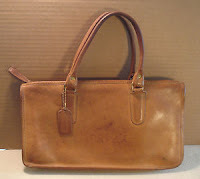
The first purse I bought was a brown leather Coach bag. It was heavy and plain but I loved it. This was back before discount malls, so it was seriously expensive. I bought it at department store using money I’d earned driving a Good Humor ice cream truck. Inside I kept my Girl Scout date book, bright pink lipstick, and occasionally, the plastic army guys I used to line up on sidewalks and restaurant tables.
I own several bags now. A big everyday one, a basket I carry in the summer, a red jeweled one I get out for special occasions–those are only a few. Every time I switch bags, I look at what I keep with me, think about what’s important to me. What do these smalls things say about my life?
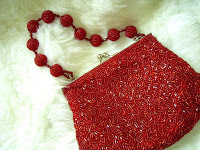
Whatever you call it, a purse, handbag, pocketbook, it can be an expression of you and your life. Maybe it holds your secrets, maybe it holds twelve lipsticks or none. Give a shout in the comments, tell us about your bag and what’s inside.
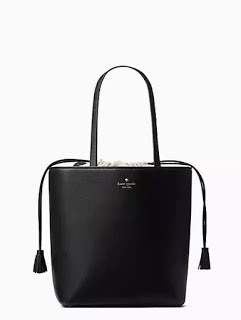
Published on June 09, 2018 07:37
June 5, 2018
Let’s (Not) Have a 3-Way My Hot Friend
Imagine a man and woman, a committed couple, cozy in each other’s arms. They’re in front of a fireplace, stretched across a soft rug and covered by plaid blanket A half empty bottle of red wine is within reach. Everything is bliss. Until he asks, “Have you ever thought about us doing it with ______.” No, blank isn’t Charlie Hunnam or Chris Hemsworth. It’s her friend. The hot one with the perfect legs, curvy ass and Instagram ready smile.
Just like that, the sweetness of the moment is gone, and she’s left with an uncertain queasy sensation that starts in her stomach and spreads to her heart. Never mind what happens to her mind. She can’t decide which of her emotions to deal with first. Anger? Hurt? Disgust? Humiliation?

Imagine she says no. But, because she’s reeling from that freshly-delivered nasty basket of emotions, she replies gently, as though she’s hoping that by speaking softly the whole matter will float up the chimney, drifting out into the starry night sky. After being burned into nothingness, of course. For some reason, maybe the wine, he doesn’t accept her response. He thinks he should explain, offer some reasons:
Its in the books you read/write.Anxiety, murder, disappointment, heartbreak, betrayal…these things are in our books too, but we don’t want them in real life either. That’s why people read--to experience things in the imaginary part of the mind.
It’s so fucking hot in porn.Hello? Everything looks better in porn. That’s why it generated 97 billion dollars last year. How about we not use porn as a standard for positive, sustainable behavior.
You won’t know unless you try it.This is just childish. For example, consider cutting off your pinky finger. You don’t need to do that to know it is 1) a bad idea 2) very painful and 3) irreversible.
It’d just be the one time.See directly above, childish, with the addition of why does that make any difference? I suppose that could be the strength of this reason, as it makes so little logical sense that there is no equivalent response.
Let’s just ask her, then decide if we want to go through with it. There’s no harm in asking.First of all, that’s disrespecting her reply of no. Secondly, yes, there is harm in asking. In fact, he has already caused harm by asking. It’s this asking business that caused the initial complications and delivered that nasty basket of confusing emotions mentioned above.
 Her anger may be the easiest to decode and deal with. She’s mad because he ruined their night by being a disgusting asshole. She’s mad because he’s suggesting the Hot Friend is hotter than she is. Also reasonable--she’s mad that he was stupid enough to bring it up. WTF.
Her anger may be the easiest to decode and deal with. She’s mad because he ruined their night by being a disgusting asshole. She’s mad because he’s suggesting the Hot Friend is hotter than she is. Also reasonable--she’s mad that he was stupid enough to bring it up. WTF.Hurt, while also terrible, is easy to sort thorough and understand--for her. She’s miserable that he doesn’t think she’s enough. Disappointed that he’s been eyeing, and thinking about, sex with not just other women…but a woman she herself has brought around him. When she tells him he has hurt her by suggesting this one-time-only-night-of-fun, he again makes a mistake.
He assumes his woman feels intimated by the Hot Friend and offers some reasons why she need not see herself as less than. The Hot Friend’s boobs aren’t really that great; one may be bigger than the other. When she smiles, you can see the crooked tooth on the lower left center of her jaw, and its kind of janky. She’s a slob…sometimes when she bends over the tops of her panties show. All these reasons makes things worse, hurting the woman partner more because all it does is reveal how carefully this guy has been studying the Hot Friend.
Disgust. This one is tricky. Confusing. Feeling this way may even make her feel guilty. After all, who feels disgusted by the idea of her friend’s body? Let’s skip over that question and hop to the last emotion because its there that the answer to this one lies.
Humiliation. This one is even trickier than disgust. More confusing. Why does she feel so much shame when he’s the one who has asked the question? Why does she feel crushing humiliation when she’s in the same room with the guy and her friend?
Intrusion. This might be the answer. The close bond between the two friends was just that - their bond. Him asking this question means he's trying to intrude into the friendship. He's also sexualizing the friendship.
Shame comes from acts we’ve done but also from acts that have been done to us. ‘Good’ shame is the guilt we feel after we’ve done something we know we shouldn’t have. ‘Toxic’ shame comes from others; it occurs when we’ve been exposed in a way we weren’t prepared for or in a way that’s too intimate. So, when he asks her if she wants to do the 3-way with her Hot Friend, he’s crossed a boundary and pulled her along for the ride--whether she wanted to go or not. Without repair, the border that had been clearly around the two of them will remain unclear. Unclear = uncertain. Toxic shames also creates feelings of inadequacy. You don’t need me to tell you what doubt + insecurity equals.
Pretending ‘the question’ was never asked isn’t going to work. That’s one genie that’s not going back into the bottle. While only one person, in this case her, realizes it, there’s a crack in the foundation. What’s going to repair it? Probably, only more conversation. Will that work?
Have some thoughts? Share ‘em in the comments.
Want to see what consensual sexual exploration might look like? Check out my new release, Make Me Blush.

Published on June 05, 2018 14:27
June 1, 2018
Happy June!
Published on June 01, 2018 04:00
May 4, 2018
Too sexy for publication: that's what they told me.
I’m not good at following directions. I know this about myself. So as soon as someone tells me not to do something, or that something can’t, or shouldn’t, be done, that’s pretty much an engraved RSVP ASAP invitation to me. When that inability to do what I’m told and my insatiable curiosity intersect all kinds of wild things happen. In this case, the thing is my new release, Make Me Blush, a beach-read anthology of stories I’ve been told were too sexy for publication.
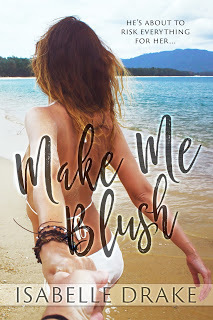
Here’s something I know: women like to read stories about dedicated partners in sexually-charged situations.
In my other life, I teach freshman composition at a college. We write essays, the standard sort that college students have been writing for years. Thesis statements, MLA formatting, research. All the usual stuff. One place where I get to mix things up is in the prompts. A while back I was wondering what my students thought of the 50 Shades phenomena, so I included a prompt about the widespread popularity of the series. The prompt encouraged the students to question the contrast between the book’s content, the relationship between the two characters, and the current wave of new feminism. Bottom line—why do women connect with this book?

As you might imagine, the prompt generated interest. After reading several essays I’ve found a distinct difference between the younger, 18-20, and older, 25-30 women in regard to Mr. Grey’s relationship appeal.
The younger women find him super romantic. They are drawn to the idea of having a man so dedicated to you that he is “interested” in every aspect of your life. They don’t find him stalky or boundary-crossing, they find him devoted. These younger women write very little about the sex; they write almost exclusively about the attentive relationship. It seems that while young women view career and societal contribution as essential and validating, they still long for a dedicated partner.The older women write about the sex. They are drawn to the idea of an extremely intense almost completely sexual relationship that has no emotional commitments. These women reflect that while they hope to have an emotionally intimate relationship in the future, they are, at present, busy with school and work and don’t have time to develop “that sort of thing” right now. This staying-single-longer, waiting-for-real-commitment life plan is on the rise, but as noted above with the younger set, this older set seeks devotion. They simply define devotion in a different way.
Here’s another thing: the popularity of female-centered stories is on the rise.
 My thinking is that there are two reasons for this. Social media, the obvious one. Privacy and easy access afford the opportunity to enjoy, or experiment with, whatever intrigues. The second reason is the increase in younger readers. In the past, the typical age of the romance reader was about 30-60. Thanks to the popularity of YA books, and the creation of the new adult genre, younger women are reading romance—and women this age don’t want ‘the usual.’ Young women aren’t looking to reinforce their traditional values, they want to test boundaries. They want adventure. They seek vicarious thrills. What they heck, we all want vicarious thrills; that’s why we read romance.We also love the happy endings.
My thinking is that there are two reasons for this. Social media, the obvious one. Privacy and easy access afford the opportunity to enjoy, or experiment with, whatever intrigues. The second reason is the increase in younger readers. In the past, the typical age of the romance reader was about 30-60. Thanks to the popularity of YA books, and the creation of the new adult genre, younger women are reading romance—and women this age don’t want ‘the usual.’ Young women aren’t looking to reinforce their traditional values, they want to test boundaries. They want adventure. They seek vicarious thrills. What they heck, we all want vicarious thrills; that’s why we read romance.We also love the happy endings.Of course I write romances with happy endings. That’s one rule I won’t break. There’s a reason why its called escapist fiction.
In short: Dedicated partners + female centered, sexually charged situations + happy endings = Make Me Blush
Make Me Blush is out now. Get your copy and see if you think its too sexual, too fem focused. Its on Kindle and available from other outlets: books2read.com/u/3G98Gp.
Published on May 04, 2018 05:42
April 13, 2018
Out Now: Make Me Blush, erotic series anthology
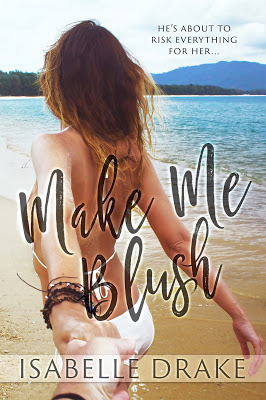
Three men: risking everything for the women they love…The result: three stories of wild, over-the-top sexy satisfaction and three happily-ever-afters.
Pink Lace Edward knows his wife wants more than his usual brand of gentle lovemaking, so he signs a contract with Winona, a woman who creates custom sexual experiences. He expects a simple lesson in seduction, something to spark Kelly’s interest, but as he settles in front of newly installed video monitors he realizes he’s been neglecting his wife’s beautiful wild side.
Pink Bow In a luxurious house on the beach, where couples gather to privately enjoy a taste of sexual freedom, Abby’s about to experience the hottest gift a husband can give.
Wicked Pink If Matthew knew how intensely Tara, his gorgeous raven-haired wife, loves him, he might not deliver her into the arms of his best friend, Dan. Dan thought he’d life behind his life filled with whips and exotic tools. But when given a chance to put his talents to use, he realizes that knowing how to unleash a woman’s wicked side has advantages.
Get your copy now from Amazon Kindle: http://a.co/fUE29x9
Published on April 13, 2018 11:28
Pre-order Now: Make Me Blush, erotic series anthology

Three men: risking everything for the women they love…The result: three stories of wild, over-the-top sexy satisfaction and three happily-ever-afters.
Pink Lace Edward knows his wife wants more than his usual brand of gentle lovemaking, so he signs a contract with Winona, a woman who creates custom sexual experiences. He expects a simple lesson in seduction, something to spark Kelly’s interest, but as he settles in front of newly installed video monitors he realizes he’s been neglecting his wife’s beautiful wild side.
Pink Bow In a luxurious house on the beach, where couples gather to privately enjoy a taste of sexual freedom, Abby’s about to experience the hottest gift a husband can give.
Wicked Pink If Matthew knew how intensely Tara, his gorgeous raven-haired wife, loves him, he might not deliver her into the arms of his best friend, Dan. Dan thought he’d life behind his life filled with whips and exotic tools. But when given a chance to put his talents to use, he realizes that knowing how to unleash a woman’s wicked side has advantages.
Pre-order at discounted price now from Amazon Kindle: http://a.co/fUE29x9
Published on April 13, 2018 11:28
March 28, 2018
Got Trolls?: Understanding and Evaluating the Effectiveness of Your Virtual Brand
Not able to attend the Popular Culture Association’s annual conference in Indianapolis? No worries. Here’s what I said.
Topic area: Virtual identity, self-promotion and individual branding.The creation of a virtual identity for self-promotional purposes requires strategic and intentional development. The two primary user needs met by social media, belonging and self-presentation, are not at the heart of creating a virtual identity. In fact, putting too much of yourself ‘out there’ can have negative consequences by harming your professional reputation and damaging creativity.Do you want to ‘self-promote’?I’m not referring to an ongoing show of look at me posts. You want to promote your abstracted self, a representation of your work. Not your true self, but an intentional, crafted version of yourself. You aren’t self-promoting, you’re interacting in a public space in a consistent and participatory way.You’re providing people with an understanding of who you are, what you do, and what you stand for but you are also bringing others together. Its your party; you’re the host, so the event is bigger than you and again, its not about you. Its about the common interests of those present. Just like a party it’s your task to bring people together and if its been a good time, they will talk about you and, your content, behind your back. As an academic, why worry about virtual identity and brand?So you can:• build a community around your scholarship and make it easier for others to find your scholarship• establish credibility by creating a canon of your work, events, and conversations• make it easier to argue for your expertise as important to your discipline• more effective for you and administration to argue for merit-based salary and promotion Do I have to do it? Make a virtual brand?You can’t really get out of it. Once you put yourself out there, people will define you.The resulting ‘brand’ serves a purpose unique from a casual or personal online presence. When promoting a brand, you’re functioning more like a business than a ‘regular’ user. You aren’t a ‘regular’ user, even though you may appear to be, and so evaluating the effectiveness of your brand requires a specific understanding of how brands are created and perceived.Consider the B2B vs. B2C contexts. These social media posts are perceived differently by users due to the way the posts are decoded by users/audience.B2B posts are perceived as less emotional, more rational, and with higher stakes. Users perceive these to require higher levels of cognition than B2C posts. Topic area: Trolls, cyberbullies and silence.One-person, virtual identities are received differently than identities resulting from corporate or institutional brands. This complicates on-line interactions. The academic, public figure brand is not a business but is using the virtual public space with a business mindset. When evaluating the effectiveness of a brand, its essential to keep these differences in mind.We’ll consider, silent users, commenters, cyberbullies, and trolls.Silent users:Characteristics of non-commenters:⎯ Roughly 40% of online users fall into the silent category.⎯ Less likely to express Dark Tetrad (Machiavellianism, psychopathy, narcissism, sadism) personality traits.Just because they are quiet doesn’t mean they don’t matter. Don’t devalue the ‘quiet’ ones. If they follow you, they are engaged whether they speak or not. Commenters:Characteristics of commenters:⎯ Roughly 60% of social media users fall in to this category.⎯ Men comment more frequently than women.⎯ 24 % of commenters prefer to debate issues. 21% prefer chatting.⎯ Average 1 hour a day commenting.⎯ More likely to express Dark Tetrad personality traits, with the exception of narcissists who do not comment. (Machiavellianism, psychopathy, sadism)⎯ More likely to be a troll than non-commenters.Commenting is slower, reflective, highly involved and more of a cognitive process than liking, which is intuitive and reflexive. Commenting patterns will be influenced by the presence of other comments as well as the types of other comments. Therefore, commenting requires a decoding of the post but also a decoding of the contextual (other) comments.Given that the number of people who favor chatting for debate is relatively low, lack of comments should not be considered a problem.Viewers in a B2B environment are less likely to comment on posts than in a B2C environment. Thus, creating a B2C feel, will generate more comments but isn’t necessarily more effective in the long run. Cyberbullies:Characteristics of cyberbullies:⎯ Known to victim.⎯ Engage in intentional, specifically targeted harassment.⎯ Show high levels of neuroticism and emotional instability as compared to trolls.⎯ Cause psychological pain equal to that of bullying in real life.If it feels like bullying it probably is. The cyber-bully attack is personal and motivated by an actual or perceived personal relationship. The psychological damage is real and will be counterproductive to emotional well-being and creativity. My suggestion, it doesn’t matter who they are, block them.Trolls:Characteristics of trolls:⎯ Most often men, with the exception of location based dating apps.⎯ Motivated by deception and meaningless disruption.⎯ Seek to cause psychological distress, target unknown and irrelevant.⎯ Express high in levels of openness to experience as compared to cyberbully.⎯ Most likely to express Dark Tetrad personality traits, most often sadism. Significantly, the troll attack is not personal. The troll seeks to harm, but not a particular person. The troll seeks to disrupt the community and conversation, but doesn’t care who or what.According to the GAIT assessment and research, the more meaningful or good the troll perceives the environment to be, the more motivated they will be to damage it. It’s for that reason, the presence of a troll can be an indicator that you have achieved something powerful.Occasional, situational, trolls also exist. These are users who are experiencing a bad mood or are influenced by context. When a post is immediately followed by a troll comment, subsequent posts are more likely to contain additional troll comments. It’sfor that reason you may want to delete troll comments. Troll comments are effective in their intended purpose, shutting down conversations. And so, if you desire conversations and interaction, deleting the troll comments can be beneficial.Arguing with the troll is not likely to be successful. They’re not motivated, as some commenters are, by the desire to prove themselves right or smart. The committed troll operates under the cloak of deception and so truth is irrelevant. In fact, truth and openness are contrary to the troll’s persona and goals. Arguing with the trolls does, as you’d guess, give them additional satisfaction and the argument is proof of success. Again reason to delete their comments. Topic area: “Best practices” and implications.
Characteristics of social media users:⎯ Extraversion and openness to new situations are most common of the Big Five personality traits among users.⎯ People who are emotionally stable use social media less frequently.⎯ There is speculation that those who show a clear mismatch between online and offline behaviors are attempting to compensate for any perceived or actual deficiencies in social contact and peer relations. It’s significant to note that visible online interactions are performed by a specific group of people who express a specific set of personality traits. Thus, much of what occurs visibly is limited to and dominated by a specific group. For example, emotionally stable, introverted women are underrepresented in comments while extroverted men who have a high level of openness are overrepresented. And so, many of the people who are out there, reading and engaging with your brand, you won’t hear from and many of those you do hear from come from a specific group.Forge ahead.It’s not about you. It’s about the community you are creating.Your approach should be fun, sustainable and incorporate all your work or areas of interest.Do what you like, what seems right, not what people tell you. In fact, I’d say if someone tells you not to do it—do it. Be:o Consistent – * Links and cues for similar info, so they already have context.o Authentic – * Sustainableo Focused – * Reduce the amount of time needed to decode.o Outgoing – * Give them something to talk about.
Avoid: o Being too specific – You want to build your brand over years. You will change.o Topics only – Doesn’t give an abstract to glue it all together. o Personal things – Complicates things, harms you and others.o Promotional/commercial. – Avoid the hard sell.
The creation of an effective brand depends on the creator’s willingness and ability to efficiently fragment and abstract their identity.
Borrow from business models - think about crowd culture and how you can use momentum that’s already out there. Work to create and build a community of “superfans.”Superfans live in crowd culture which comes in two sorts: ➢ subcultures--which connect the intersection of unique interests, specific values, beliefs, practices, aesthetics ➢ art worlds--which push againstcreative breakthroughs often come from contrasting and challenging ideas, testing limits and “conflict’In both instances, the ideas of people influence and move. Crowdculture depends on ideas and the intersection of ideas - not a person. The person may represent a collection of ideas, be a brand themselves, but it’s the ideas and values the person represents that draws ‘fans.’Next steps?1. Evaluate the culture, its values and interests. Be intentional.Your audience should include people from all areas—other academics, those who work in the industry, pure fans, anyone interested in what you’re interested in.2. Look for opportunity, make opportunity.3. Do it, start posting.Ongoing:1. Innovate, use new opportunities but be consistent.2. Ignore ‘trends’ which are concrete, with start and end. Instead focus on the culture, its ideas and values.
Topic area: Virtual identity, self-promotion and individual branding.The creation of a virtual identity for self-promotional purposes requires strategic and intentional development. The two primary user needs met by social media, belonging and self-presentation, are not at the heart of creating a virtual identity. In fact, putting too much of yourself ‘out there’ can have negative consequences by harming your professional reputation and damaging creativity.Do you want to ‘self-promote’?I’m not referring to an ongoing show of look at me posts. You want to promote your abstracted self, a representation of your work. Not your true self, but an intentional, crafted version of yourself. You aren’t self-promoting, you’re interacting in a public space in a consistent and participatory way.You’re providing people with an understanding of who you are, what you do, and what you stand for but you are also bringing others together. Its your party; you’re the host, so the event is bigger than you and again, its not about you. Its about the common interests of those present. Just like a party it’s your task to bring people together and if its been a good time, they will talk about you and, your content, behind your back. As an academic, why worry about virtual identity and brand?So you can:• build a community around your scholarship and make it easier for others to find your scholarship• establish credibility by creating a canon of your work, events, and conversations• make it easier to argue for your expertise as important to your discipline• more effective for you and administration to argue for merit-based salary and promotion Do I have to do it? Make a virtual brand?You can’t really get out of it. Once you put yourself out there, people will define you.The resulting ‘brand’ serves a purpose unique from a casual or personal online presence. When promoting a brand, you’re functioning more like a business than a ‘regular’ user. You aren’t a ‘regular’ user, even though you may appear to be, and so evaluating the effectiveness of your brand requires a specific understanding of how brands are created and perceived.Consider the B2B vs. B2C contexts. These social media posts are perceived differently by users due to the way the posts are decoded by users/audience.B2B posts are perceived as less emotional, more rational, and with higher stakes. Users perceive these to require higher levels of cognition than B2C posts. Topic area: Trolls, cyberbullies and silence.One-person, virtual identities are received differently than identities resulting from corporate or institutional brands. This complicates on-line interactions. The academic, public figure brand is not a business but is using the virtual public space with a business mindset. When evaluating the effectiveness of a brand, its essential to keep these differences in mind.We’ll consider, silent users, commenters, cyberbullies, and trolls.Silent users:Characteristics of non-commenters:⎯ Roughly 40% of online users fall into the silent category.⎯ Less likely to express Dark Tetrad (Machiavellianism, psychopathy, narcissism, sadism) personality traits.Just because they are quiet doesn’t mean they don’t matter. Don’t devalue the ‘quiet’ ones. If they follow you, they are engaged whether they speak or not. Commenters:Characteristics of commenters:⎯ Roughly 60% of social media users fall in to this category.⎯ Men comment more frequently than women.⎯ 24 % of commenters prefer to debate issues. 21% prefer chatting.⎯ Average 1 hour a day commenting.⎯ More likely to express Dark Tetrad personality traits, with the exception of narcissists who do not comment. (Machiavellianism, psychopathy, sadism)⎯ More likely to be a troll than non-commenters.Commenting is slower, reflective, highly involved and more of a cognitive process than liking, which is intuitive and reflexive. Commenting patterns will be influenced by the presence of other comments as well as the types of other comments. Therefore, commenting requires a decoding of the post but also a decoding of the contextual (other) comments.Given that the number of people who favor chatting for debate is relatively low, lack of comments should not be considered a problem.Viewers in a B2B environment are less likely to comment on posts than in a B2C environment. Thus, creating a B2C feel, will generate more comments but isn’t necessarily more effective in the long run. Cyberbullies:Characteristics of cyberbullies:⎯ Known to victim.⎯ Engage in intentional, specifically targeted harassment.⎯ Show high levels of neuroticism and emotional instability as compared to trolls.⎯ Cause psychological pain equal to that of bullying in real life.If it feels like bullying it probably is. The cyber-bully attack is personal and motivated by an actual or perceived personal relationship. The psychological damage is real and will be counterproductive to emotional well-being and creativity. My suggestion, it doesn’t matter who they are, block them.Trolls:Characteristics of trolls:⎯ Most often men, with the exception of location based dating apps.⎯ Motivated by deception and meaningless disruption.⎯ Seek to cause psychological distress, target unknown and irrelevant.⎯ Express high in levels of openness to experience as compared to cyberbully.⎯ Most likely to express Dark Tetrad personality traits, most often sadism. Significantly, the troll attack is not personal. The troll seeks to harm, but not a particular person. The troll seeks to disrupt the community and conversation, but doesn’t care who or what.According to the GAIT assessment and research, the more meaningful or good the troll perceives the environment to be, the more motivated they will be to damage it. It’s for that reason, the presence of a troll can be an indicator that you have achieved something powerful.Occasional, situational, trolls also exist. These are users who are experiencing a bad mood or are influenced by context. When a post is immediately followed by a troll comment, subsequent posts are more likely to contain additional troll comments. It’sfor that reason you may want to delete troll comments. Troll comments are effective in their intended purpose, shutting down conversations. And so, if you desire conversations and interaction, deleting the troll comments can be beneficial.Arguing with the troll is not likely to be successful. They’re not motivated, as some commenters are, by the desire to prove themselves right or smart. The committed troll operates under the cloak of deception and so truth is irrelevant. In fact, truth and openness are contrary to the troll’s persona and goals. Arguing with the trolls does, as you’d guess, give them additional satisfaction and the argument is proof of success. Again reason to delete their comments. Topic area: “Best practices” and implications.
Characteristics of social media users:⎯ Extraversion and openness to new situations are most common of the Big Five personality traits among users.⎯ People who are emotionally stable use social media less frequently.⎯ There is speculation that those who show a clear mismatch between online and offline behaviors are attempting to compensate for any perceived or actual deficiencies in social contact and peer relations. It’s significant to note that visible online interactions are performed by a specific group of people who express a specific set of personality traits. Thus, much of what occurs visibly is limited to and dominated by a specific group. For example, emotionally stable, introverted women are underrepresented in comments while extroverted men who have a high level of openness are overrepresented. And so, many of the people who are out there, reading and engaging with your brand, you won’t hear from and many of those you do hear from come from a specific group.Forge ahead.It’s not about you. It’s about the community you are creating.Your approach should be fun, sustainable and incorporate all your work or areas of interest.Do what you like, what seems right, not what people tell you. In fact, I’d say if someone tells you not to do it—do it. Be:o Consistent – * Links and cues for similar info, so they already have context.o Authentic – * Sustainableo Focused – * Reduce the amount of time needed to decode.o Outgoing – * Give them something to talk about.
Avoid: o Being too specific – You want to build your brand over years. You will change.o Topics only – Doesn’t give an abstract to glue it all together. o Personal things – Complicates things, harms you and others.o Promotional/commercial. – Avoid the hard sell.
The creation of an effective brand depends on the creator’s willingness and ability to efficiently fragment and abstract their identity.
Borrow from business models - think about crowd culture and how you can use momentum that’s already out there. Work to create and build a community of “superfans.”Superfans live in crowd culture which comes in two sorts: ➢ subcultures--which connect the intersection of unique interests, specific values, beliefs, practices, aesthetics ➢ art worlds--which push againstcreative breakthroughs often come from contrasting and challenging ideas, testing limits and “conflict’In both instances, the ideas of people influence and move. Crowdculture depends on ideas and the intersection of ideas - not a person. The person may represent a collection of ideas, be a brand themselves, but it’s the ideas and values the person represents that draws ‘fans.’Next steps?1. Evaluate the culture, its values and interests. Be intentional.Your audience should include people from all areas—other academics, those who work in the industry, pure fans, anyone interested in what you’re interested in.2. Look for opportunity, make opportunity.3. Do it, start posting.Ongoing:1. Innovate, use new opportunities but be consistent.2. Ignore ‘trends’ which are concrete, with start and end. Instead focus on the culture, its ideas and values.
Published on March 28, 2018 19:09
Got Trolls?: Understanding and Evaluating the Effectiveness of Your Virtual Brand the Abstract and References
Popular Culture Association 2018 National Conference Popular Culture Association
Indianapolis, Indiana
Got Trolls?: Understanding and Evaluating the Effectiveness of Your Virtual Brand
Abstract
The creation of a virtual identity for self-promotional purposes requires strategic and intentional development. The resulting ‘brand’ serves a purpose unique from a casual or personal online presence. Evaluating the effectiveness of an individual, sole person, virtual brand requires a specific understanding of how singular brands are created and perceived. The creation of an effective brand depends on the creator’s willingness and ability to efficiently fragment and abstract their identity. One-person, virtual identities are received differently than identities resulting from corporate or institutional brands. This complicates on-line interactions. A consideration of the two primary user needs met by social media, belonging and self-presentation, as identified by Nadkami & Hofmann (2012), can assist in creating, negotiating, and evaluating the effectiveness of a singular virtual brand.
*******************TOPIC AREAS
Virtual identity, self-promotion and individual branding.Trolls, cyberbullies and silence.“Best practices” and implications. ***************
Topic area: Virtual identity, self-promotion and individual branding.
Correa, Teresa, Amber Willard Hinsley, and Homero Gil de Zuniga. "Who Interacts on the Web?: The Intersection of Users' Personality & Social Media Usa." Computers in Human Behavior, vol. 26, Oct. 2010, pp. 247-53.Topic area: Trolls, cyberbullies and silence.
Buckels, Erin E., Paul D. Trapnell, and Delroy L. Paulhus. "Trolls just want to have fun." Personality and Individual Differences, vol. 67, Sept. 2014, pp. 97-102. Accessed 12 Jan. 2018.Cheng, Justin, Cristian Danescu-Niculescu-Mizil, Jure Leskovec, and Michael Bernstein. "Anyone Can Become a Troll." American Scientist, vol. 105, no. 3, May 2017, pp. 152-55. Accessed 11 Jan. 2018.Craker, Naomi, and Evita March. "The dark side of Facebook®: The Dark Tetrad, negative social potency, and trolling behaviours." Personality and Individual Differences, vol. 102, Nov. 2016, pp. 79-84. Accessed 9 Mar. 2018.March, Evita, Rachel Grieve, Jessica Marrington, and Peter K. Jonason. "Trolling on Tinder® (and other dating apps): Examining the role of the Dark Tetrad and impulsivity." Personality and Individual Differences, vol. 110, May 2017, pp. 139-43. Accessed 11 Feb. 2018.Zezulka, Lauren A., and Kathryn C. Seigfried-Spellar. "Differentiating Cyberbullies and Internet Trolls by Personality Characteristics and Self-Esteem." Journal of Digital Forensics, Security and Law, vol. 11, no. 3, Jan. 2016, pp. 7-25. Accessed 13 Feb. 2018.
Topic area: “Best practices” and implications.
Coles, Linda. Social Media for Business: Foolproof Tips to Help You Promote Your Business or Your Brand. Milton, John Wiley & Sons Australia, 2018.Holt, Douglas. "Branding in the Age of Social Media." Harvard Business Review, Mar. 2016, pp. 41+. Accessed 11 Mar. 2018.Kerpen, Dave. Likeable Social Media: How to Delight Your Customers, Create an Irresistible Brand, and Be Amazing on Facebook, Twitter, Linkedin, Instagram, Pinterest, and More. New York, McGraw Hill Education, 2015.
*********For the full paper, see this post.
Indianapolis, Indiana
Got Trolls?: Understanding and Evaluating the Effectiveness of Your Virtual Brand
Abstract
The creation of a virtual identity for self-promotional purposes requires strategic and intentional development. The resulting ‘brand’ serves a purpose unique from a casual or personal online presence. Evaluating the effectiveness of an individual, sole person, virtual brand requires a specific understanding of how singular brands are created and perceived. The creation of an effective brand depends on the creator’s willingness and ability to efficiently fragment and abstract their identity. One-person, virtual identities are received differently than identities resulting from corporate or institutional brands. This complicates on-line interactions. A consideration of the two primary user needs met by social media, belonging and self-presentation, as identified by Nadkami & Hofmann (2012), can assist in creating, negotiating, and evaluating the effectiveness of a singular virtual brand.
*******************TOPIC AREAS
Virtual identity, self-promotion and individual branding.Trolls, cyberbullies and silence.“Best practices” and implications. ***************
Topic area: Virtual identity, self-promotion and individual branding.
Correa, Teresa, Amber Willard Hinsley, and Homero Gil de Zuniga. "Who Interacts on the Web?: The Intersection of Users' Personality & Social Media Usa." Computers in Human Behavior, vol. 26, Oct. 2010, pp. 247-53.Topic area: Trolls, cyberbullies and silence.
Buckels, Erin E., Paul D. Trapnell, and Delroy L. Paulhus. "Trolls just want to have fun." Personality and Individual Differences, vol. 67, Sept. 2014, pp. 97-102. Accessed 12 Jan. 2018.Cheng, Justin, Cristian Danescu-Niculescu-Mizil, Jure Leskovec, and Michael Bernstein. "Anyone Can Become a Troll." American Scientist, vol. 105, no. 3, May 2017, pp. 152-55. Accessed 11 Jan. 2018.Craker, Naomi, and Evita March. "The dark side of Facebook®: The Dark Tetrad, negative social potency, and trolling behaviours." Personality and Individual Differences, vol. 102, Nov. 2016, pp. 79-84. Accessed 9 Mar. 2018.March, Evita, Rachel Grieve, Jessica Marrington, and Peter K. Jonason. "Trolling on Tinder® (and other dating apps): Examining the role of the Dark Tetrad and impulsivity." Personality and Individual Differences, vol. 110, May 2017, pp. 139-43. Accessed 11 Feb. 2018.Zezulka, Lauren A., and Kathryn C. Seigfried-Spellar. "Differentiating Cyberbullies and Internet Trolls by Personality Characteristics and Self-Esteem." Journal of Digital Forensics, Security and Law, vol. 11, no. 3, Jan. 2016, pp. 7-25. Accessed 13 Feb. 2018.
Topic area: “Best practices” and implications.
Coles, Linda. Social Media for Business: Foolproof Tips to Help You Promote Your Business or Your Brand. Milton, John Wiley & Sons Australia, 2018.Holt, Douglas. "Branding in the Age of Social Media." Harvard Business Review, Mar. 2016, pp. 41+. Accessed 11 Mar. 2018.Kerpen, Dave. Likeable Social Media: How to Delight Your Customers, Create an Irresistible Brand, and Be Amazing on Facebook, Twitter, Linkedin, Instagram, Pinterest, and More. New York, McGraw Hill Education, 2015.
*********For the full paper, see this post.
Published on March 28, 2018 09:38
Got Trolls?: Understanding and Evaluating the Effectiveness of Your Virtual Brand
Popular Culture Association 2018 National Conference Popular Culture Association
Indianapolis, Indiana
Got Trolls?: Understanding and Evaluating the Effectiveness of Your Virtual Brand
Abstract
The creation of a virtual identity for self-promotional purposes requires strategic and intentional development. The resulting ‘brand’ serves a purpose unique from a casual or personal online presence. Evaluating the effectiveness of an individual, sole person, virtual brand requires a specific understanding of how singular brands are created and perceived. The creation of an effective brand depends on the creator’s willingness and ability to efficiently fragment and abstract their identity. One-person, virtual identities are received differently than identities resulting from corporate or institutional brands. This complicates on-line interactions. A consideration of the two primary user needs met by social media, belonging and self-presentation, as identified by Nadkami & Hofmann (2012), can assist in creating, negotiating, and evaluating the effectiveness of a singular virtual brand.
*******************TOPIC AREAS
Virtual identity, self-promotion and individual branding.Trolls, cyberbullies and silence.“Best practices” and implications. ******************
Topic area: Virtual identity, self-promotion and individual branding.
Correa, Teresa, Amber Willard Hinsley, and Homero Gil de Zuniga. "Who Interacts on the Web?: The Intersection of Users' Personality & Social Media Usa." Computers in Human Behavior, vol. 26, Oct. 2010, pp. 247-53.Topic area: Trolls, cyberbullies and silence.
Buckels, Erin E., Paul D. Trapnell, and Delroy L. Paulhus. "Trolls just want to have fun." Personality and Individual Differences, vol. 67, Sept. 2014, pp. 97-102. Accessed 12 Jan. 2018.Cheng, Justin, Cristian Danescu-Niculescu-Mizil, Jure Leskovec, and Michael Bernstein. "Anyone Can Become a Troll." American Scientist, vol. 105, no. 3, May 2017, pp. 152-55. Accessed 11 Jan. 2018.Craker, Naomi, and Evita March. "The dark side of Facebook®: The Dark Tetrad, negative social potency, and trolling behaviours." Personality and Individual Differences, vol. 102, Nov. 2016, pp. 79-84. Accessed 9 Mar. 2018.March, Evita, Rachel Grieve, Jessica Marrington, and Peter K. Jonason. "Trolling on Tinder® (and other dating apps): Examining the role of the Dark Tetrad and impulsivity." Personality and Individual Differences, vol. 110, May 2017, pp. 139-43. Accessed 11 Feb. 2018.Zezulka, Lauren A., and Kathryn C. Seigfried-Spellar. "Differentiating Cyberbullies and Internet Trolls by Personality Characteristics and Self-Esteem." Journal of Digital Forensics, Security and Law, vol. 11, no. 3, Jan. 2016, pp. 7-25. Accessed 13 Feb. 2018.
Topic area: “Best practices” and implications.
Coles, Linda. Social Media for Business: Foolproof Tips to Help You Promote Your Business or Your Brand. Milton, John Wiley & Sons Australia, 2018.Holt, Douglas. "Branding in the Age of Social Media." Harvard Business Review, Mar. 2016, pp. 41+. Accessed 11 Mar. 2018.Kerpen, Dave. Likeable Social Media: How to Delight Your Customers, Create an Irresistible Brand, and Be Amazing on Facebook, Twitter, Linkedin, Instagram, Pinterest, and More. New York, McGraw Hill Education, 2015.
Published on March 28, 2018 09:38
March 17, 2018
St. Patrick's Day Holiday Survival: Keep the Joy
Why didn’t someone tell me it was St. Patrick’s Day? It’s important to be ready for these things in advance. Had I known this significant holiday was approaching I would’ve prepared. If someone had been kind enough to remind me I would have…would have… Would’ve…?
I glance down at the thin, green beer in my formerly frosted mug. I would’ve drunk less wine at Nick’s last night.
That way I wouldn’t have this cloud of guilt fogging my vision. Girls who are trying to get their lives together shouldn’t drink too much three nights in a row. It’s tricky enough business trying to see through one’s drunken haze without the nuisance of an emotional cloud of guilt making things worse.
Come to think of it, I’m not hearing so well either.
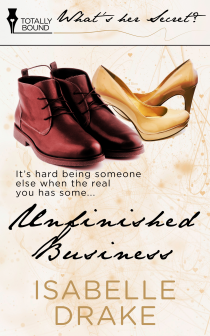 “Whaddya say, Riana?”
“Whaddya say, Riana?”
Riana arches across the tattered booth she, Nick and I have been using as our home base for the past two hours. “It says here”—she stabs at the helpfully informational, green flyer that was handed to us on the way in—“that there’s going to be a limerick contest.”
A contest.
I twist my mouth thoughtfully, as if I can taste the question lurking there. “What’s the prize?”
Her eyebrows pull together as she positions the sheet closer to her face and peers at me across the top of it. “Dinner for two. The Rooney McNamara special!”
I try to ask, “Do you suppose that’s corned beef and cabbage or some other traditional Irish dish?”
Unfortunately, what comes out sounds more like, “Dahya sink thats cornbeefan cabbish?”
Before Riana translates, Nick slides in next to me, bumps my shoulder with his and grumbles, “Jukebox is broken.”
A sappy grin tilts across my face as I grab his left arm. “I’m so glad you’re out with us tonight, Nicky-boy.” I hold up my hand so my forefinger and thumb are about an inch apart. “I might be a little sorry you lost the toss, seein’ as you’re the only one of us who’s actually Irish. Or part Irish. Whatever.”
Riana frowns and pats the arm I’m clinging to. “You ought to be getting drunk on this nasty beer.”“Clear the air, girls. It’s starting to look like one of those weep fests.” He shakes his head. “I guess I should be glad Josie isn’t here.”
I shift to Riana. “Are you feeling all stupid and weepy?”
She ignores my question and stabs at the air near Nick. “The contest! Nick! You have to know a limerick!”
Looking thoughtful, he takes a long drink of his Gatorade.
“I know a limerick,” I mumble, half-hoping neither of them heard me and half-hoping they’ll think I’m wonderful.
 Unfortunately, after the words are out of my mouth, their heads swivel simultaneously like puppets.
Unfortunately, after the words are out of my mouth, their heads swivel simultaneously like puppets.
Creepy, slow moving puppets. Not at all a response I was hoping for. Or one I’d even considered.
Please God, don’t let them blink at the same time, because then I’ll have to scrabble over the table and bolt for the door.
Oh, relief. Nick is talking.
I stare at him for a minute because his teeth really are so nice and straight. “Huh?”
He waves his hand between Riana and him. “Tell us the limerick.”
Nice hands, too. Why haven’t I ever noticed that before? “Limerick?”
“To win the Irish dinners,” Riana says as if I’m some dolt who can’t remember bits of conversation from one piece to the next. “The contest, Hayley.”
Oh yeah. I ask them, “Do we even want that cabbish?”
Nick opens his mouth but the voice that comes out is cheerfully musical. I didn’t know Nick could do an Irish accent.
Oh. He can’t do an accent, it’s some round, little man wearing a green cap. He has suspenders and lime green striped pants. It’s a leprechaun? Can’t be. Yet there he is, right there in the front of the bar, standing on a tiny stage.
The leprechaun keeps talking and it sounds great. The right thing to put a person in the mood for a real old-world St. Patty’s Day. The crowd is so noisy, I can’t really make out what the little guy is saying but it doesn’t matter. “Rolling rolling jolly words.” He laughs and his world laughs with him. “More jolly words, something else…limericks.”
Nick shoots to his feet and does a weird saluting thing. There’s a warm round of applause. What nice people to clap for my friend. Maybe they like his smile too. And his arms. I bet they like his arms as much as I do. I peek at him from the corners of my eyes. His back is nice too.
While I’m giving him the once-over, Nick grabs my arm and rudely jerks me to my feet. After I totter a bit, I turn to glare at him but notice that everyone in the room is staring at me. Expectantly.
Actually, I have to admit, I feel their expectation more than see it, because mostly their faces are obscured by that damn guilt cloud.
The next thing I know, the nice leprechaun is taking my hand and leading me through the tables crammed with muddy brown and bright green people. He squares me in front of a microphone and nods.
Silence greets me.
I blink, puppet-like, and frighten myself as my head pivots stiffly above my neck.
A shout comes from my table.
“Say the limerick, Hayley.”
What would I do without Nick? I understand now. I’m trying to win some cornbeffan cabbish.
Here’s a chance to do something different. Step out of my comfort zone and learn about myself.
Public speaking is not in my comfort zone, that’s for damn sure. I hate it, as a matter of fact. So being at the microphone is a good thing. Right?
~~~~~
About Unfinished Business:
She ran away from the town that wouldn’t forget, to a city that doesn’t forgive, right into the arms of the guy who insists she set things right.Less than a year ago, Hayley Jones made a scandalous decision that sent her packing. She left her country hometown, moved to the city and made a new life for herself. But it’s hard being someone else when the real you has some unfinished business.Hayley knows taking care of the unresolved piece of her past could stir up more trouble and humiliation, so she dodges the truth and puts her energy into her new friends and job. That strategy works for a short while but people from her past start showing up in her present.Life gets even more complicated when she realizes she’s falling for Nick Noel, a guy who knows she’s running from something, and continually challenges her to be herself. But Hayley is afraid of what will happen if Nick finds out who she really is and what she did back home.
Get your copy of Unfinished Business from Amazon, Barnes and Noble, and direct from Totally Entwined.
I glance down at the thin, green beer in my formerly frosted mug. I would’ve drunk less wine at Nick’s last night.
That way I wouldn’t have this cloud of guilt fogging my vision. Girls who are trying to get their lives together shouldn’t drink too much three nights in a row. It’s tricky enough business trying to see through one’s drunken haze without the nuisance of an emotional cloud of guilt making things worse.
Come to think of it, I’m not hearing so well either.
 “Whaddya say, Riana?”
“Whaddya say, Riana?”Riana arches across the tattered booth she, Nick and I have been using as our home base for the past two hours. “It says here”—she stabs at the helpfully informational, green flyer that was handed to us on the way in—“that there’s going to be a limerick contest.”
A contest.
I twist my mouth thoughtfully, as if I can taste the question lurking there. “What’s the prize?”
Her eyebrows pull together as she positions the sheet closer to her face and peers at me across the top of it. “Dinner for two. The Rooney McNamara special!”
I try to ask, “Do you suppose that’s corned beef and cabbage or some other traditional Irish dish?”
Unfortunately, what comes out sounds more like, “Dahya sink thats cornbeefan cabbish?”
Before Riana translates, Nick slides in next to me, bumps my shoulder with his and grumbles, “Jukebox is broken.”
A sappy grin tilts across my face as I grab his left arm. “I’m so glad you’re out with us tonight, Nicky-boy.” I hold up my hand so my forefinger and thumb are about an inch apart. “I might be a little sorry you lost the toss, seein’ as you’re the only one of us who’s actually Irish. Or part Irish. Whatever.”
Riana frowns and pats the arm I’m clinging to. “You ought to be getting drunk on this nasty beer.”“Clear the air, girls. It’s starting to look like one of those weep fests.” He shakes his head. “I guess I should be glad Josie isn’t here.”
I shift to Riana. “Are you feeling all stupid and weepy?”
She ignores my question and stabs at the air near Nick. “The contest! Nick! You have to know a limerick!”
Looking thoughtful, he takes a long drink of his Gatorade.
“I know a limerick,” I mumble, half-hoping neither of them heard me and half-hoping they’ll think I’m wonderful.
 Unfortunately, after the words are out of my mouth, their heads swivel simultaneously like puppets.
Unfortunately, after the words are out of my mouth, their heads swivel simultaneously like puppets. Creepy, slow moving puppets. Not at all a response I was hoping for. Or one I’d even considered.
Please God, don’t let them blink at the same time, because then I’ll have to scrabble over the table and bolt for the door.
Oh, relief. Nick is talking.
I stare at him for a minute because his teeth really are so nice and straight. “Huh?”
He waves his hand between Riana and him. “Tell us the limerick.”
Nice hands, too. Why haven’t I ever noticed that before? “Limerick?”
“To win the Irish dinners,” Riana says as if I’m some dolt who can’t remember bits of conversation from one piece to the next. “The contest, Hayley.”
Oh yeah. I ask them, “Do we even want that cabbish?”
Nick opens his mouth but the voice that comes out is cheerfully musical. I didn’t know Nick could do an Irish accent.
Oh. He can’t do an accent, it’s some round, little man wearing a green cap. He has suspenders and lime green striped pants. It’s a leprechaun? Can’t be. Yet there he is, right there in the front of the bar, standing on a tiny stage.
The leprechaun keeps talking and it sounds great. The right thing to put a person in the mood for a real old-world St. Patty’s Day. The crowd is so noisy, I can’t really make out what the little guy is saying but it doesn’t matter. “Rolling rolling jolly words.” He laughs and his world laughs with him. “More jolly words, something else…limericks.”
Nick shoots to his feet and does a weird saluting thing. There’s a warm round of applause. What nice people to clap for my friend. Maybe they like his smile too. And his arms. I bet they like his arms as much as I do. I peek at him from the corners of my eyes. His back is nice too.
While I’m giving him the once-over, Nick grabs my arm and rudely jerks me to my feet. After I totter a bit, I turn to glare at him but notice that everyone in the room is staring at me. Expectantly.
Actually, I have to admit, I feel their expectation more than see it, because mostly their faces are obscured by that damn guilt cloud.
The next thing I know, the nice leprechaun is taking my hand and leading me through the tables crammed with muddy brown and bright green people. He squares me in front of a microphone and nods.
Silence greets me.
I blink, puppet-like, and frighten myself as my head pivots stiffly above my neck.
A shout comes from my table.
“Say the limerick, Hayley.”
What would I do without Nick? I understand now. I’m trying to win some cornbeffan cabbish.
Here’s a chance to do something different. Step out of my comfort zone and learn about myself.
Public speaking is not in my comfort zone, that’s for damn sure. I hate it, as a matter of fact. So being at the microphone is a good thing. Right?
~~~~~
About Unfinished Business:
She ran away from the town that wouldn’t forget, to a city that doesn’t forgive, right into the arms of the guy who insists she set things right.Less than a year ago, Hayley Jones made a scandalous decision that sent her packing. She left her country hometown, moved to the city and made a new life for herself. But it’s hard being someone else when the real you has some unfinished business.Hayley knows taking care of the unresolved piece of her past could stir up more trouble and humiliation, so she dodges the truth and puts her energy into her new friends and job. That strategy works for a short while but people from her past start showing up in her present.Life gets even more complicated when she realizes she’s falling for Nick Noel, a guy who knows she’s running from something, and continually challenges her to be herself. But Hayley is afraid of what will happen if Nick finds out who she really is and what she did back home.
Get your copy of Unfinished Business from Amazon, Barnes and Noble, and direct from Totally Entwined.
Published on March 17, 2018 07:30




